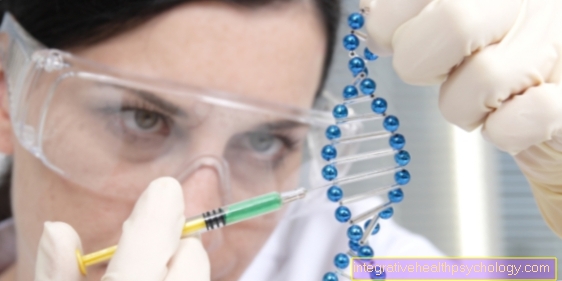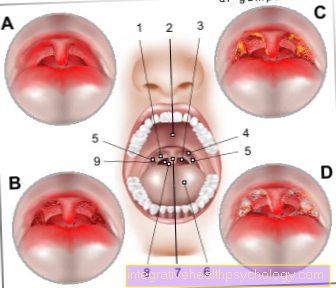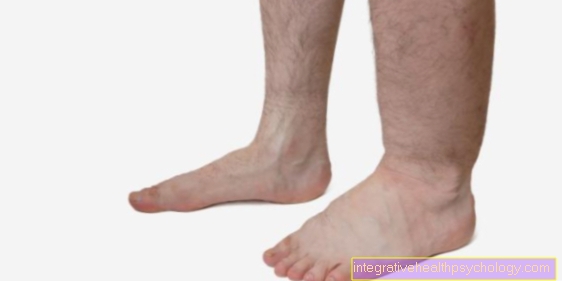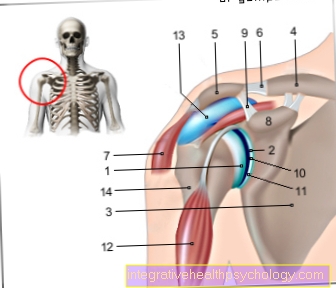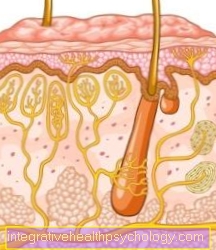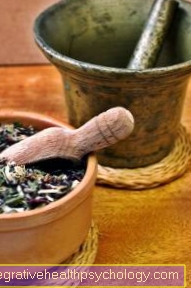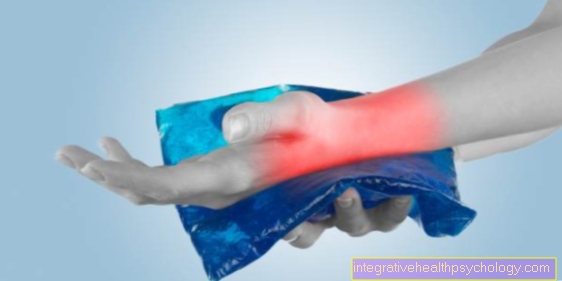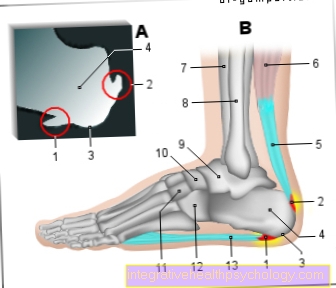Nettle
Synonyms in a broader sense
Synonyms:
- Hair nettle
- Hemp nettle
- Thunderbolt
- Zingel
- large neddel
- Tissel
- Gout rod
or - nettle
Latin name:
- Urtica dioica
or - Urtica urens
Genus: nettle family
Please also note our topic in the homeopathic use of the nettle as urtica.
Explanation / definition
The medicinal plant nettle has a long tradition today. The extracts from the fresh and dried leaves and dried roots of the medicinal herb are used in a variety of ways today.
The pharmacologically important ingredients of the leaves are the amino acids, flavonoids, caffeic acid derivatives and minerals (such as iron).
The root of the nettle contains lectins, lignans, tannins and water-soluble polysaccharides.
The plant parts of the large nettle are mainly used for medicinal purposes.
The plant

The medicinal plants Nettle belongs to the stinging nettle family of the Urticaceae.
It is a 30 cm to 150 cm high plant with a hardy rhizome.
The Nettle is a dioecious plant, which means: it has female and male flowers. In the Heyday from May to July the greenish-white flowers hang in small panicles on the upper leaf stands.
The leaves are oblong and serrate on the edges. The whole Medicinal herbs are covered with stinging hairs. Only the young shoots and leaves, from March to May, are an exception. Your stinging hairs are not yet developed. The nettle prefers nutrient-rich soils, can spread quickly and can be found almost all over the world. It grows in alluvial forests and on the banks of water.
When the nettle is touched, the tips of the stinging hair break off and their ingredients are released into the skin. Wheal formation and a burning sensation set in. In addition to the large nettle (Urtica dioica) there is also the small nettle (Urtica urens). Both have healing properties.
history
Historically, the nettle has a long tradition.
The botanical name "Urtica" derives from the Latin name "urere" (to burn) Art. Before the introduction of cotton, there was the nettle the most important fiber plant in Europe.
Of the greek doctor "Dioscorides" treated some diseases with the in the first century after Christie Medicinal plants Nettle. Whipping the back with nettle stalks was widespread, creating a sensation of warmth for several hours and against sciatica rheumatism or Lumbago should help.
in the middle Ages the nettle was placed in the urine of a sick person as a prognosis.
If it stayed green day and night, it was a sign of speedy recovery; but if the nettle shrank, all hope was lost.
Manufacturing
In folk medicine, the nettle is used as a decoction of the finely chopped root mixed with wine vinegar as a hair restorer or for hair loss.
In folk medicine, a nettle schnapps is made for stomach complaints or heartburn.
The young nettle leaves can be used in spring as a vitamin donor in salads and soups. The extracts from the leaves and roots of the medicinal plants nettle are used medicinally. Teas and fresh plant juices of the nettle are available in the pharmacy.
There are also drops and capsules and alcoholic tinctures for external use.
Therapy and areas of application
The medicinal effectiveness of preparations made from nettle leaves or nettle roots has been confirmed in many studies.
The healing effect in arthritis and rheumatism comes from the ingredient in the nettle leaves of the large nettle, which inhibits the formation of inflammatory substances.
The caffeoyl malic acid and unsaturated fatty acids help to alleviate rheumatism. The nettle herb can be used both for rheumatoid complaints and urinary tract infections.
The nettle tea preparations have a water-releasing and flushing effect in the case of urinary tract diseases and the formation of kidney and urinary gravel.
Nettle root extracts relieve symptoms of an age-related, benign enlargement of the prostate gland. Urination problems as a result of an enlarged prostate were improved in a study with nettle root extracts.
The urge to urinate at night was reduced and the flow of urine increased after ingesting nettle extracts. The residual urine remaining in the bladder decreased.
Use in homeopathy
As Urtica urensobtained from the fresh flowering herb. In the potencies D2 to D6 applied to Hives and others burning and itchy rashes. Even with light ones Burns and sunburn. Also at rheumatism and at gout for better excretion of uric acid. Also works that Milk flow beneficial for nursing mothers.
Dosage forms
The Nettle is not just a so-called weed, but a tasty medicinal plant.
Valuable ingredients such as vitamins A. and E, magnesium, sodium, iron, potassium and silicon, as well as many other active plant substances, make it effective.
Ready-to-use preparations (capsules) with various dry extracts, the fresh plant juice or preparations made from the leaves or the herb of the nettle are used.
The recommended daily dose is 8 to 12 g dried leaves, divided into two to three servings a day.
But you can also use 3 x 15 milliliters of pressed juice. Please always follow the manufacturer's instructions. For the preparation of a tea you need three to four teaspoons of finely chopped cabbage.
This is scalded over with 150 ml of boiling water and strained after 10 minutes.
You drink two to three servings of it a day. Ready-made preparations from the roots of the nettle are available as capsules, film-coated tablets or drops. They consist of liquid or dry extracts and tea preparations. A daily dose of 4 to 6 g of nettle root is recommended. Please note the information provided by the manufacturer. To make a tea from nettle roots you need a teaspoon of crushed roots.
This is boiled with 150 ml of cold water for 1 minute and then strained after 10 minutes. You drink 2 to three cups of nettle root tea from it.
Nettle is used externally tincture in a ratio of 1:10 with alcohol. Nettle hair tonic is an old home remedy for oily hair, Hair loss and Dandruff.
To prepare a nettle hair tonic you need 250 g of chopped roots.
This is boiled in one liter of water and 0.5 l of wine vinegar for 30 minutes. This creates a hair tonic with which the hair is massaged once a week. It should be noted, however, that finished preparations are often of higher quality than simple tea blends.
Combination with other medicinal plants
Nettle leaves or nettle roots are a popular component of tea mixes with a diuretic, "blood-cleaning effect" rheumatism, degenerative Joint disease, Kidney or gallstones.
Example of a tea mixture:
Nettle leaves 20.0 g
Dandelion root with cabbage 20.0 g
Horsetail 10.0 g
Birch leaves 5.0 g
Rose hips with seeds 5.0 g
Pour ¼ l of boiling water over 2 heaped teaspoons of this mixture, let stand for 15 minutes, strain. Drink a cup 3 times a day, also as a cure for 6 weeks, consult your doctor beforehand.
Side effect / interaction
When used internally, it can occur with preparations made from nettle leaves or nettle roots Gastrointestinal complaints come.
In addition, allergic reactions were observed after ingesting nettle extracts. It is important before taking the Medicinal plants Nettle, the diagnostic work-up!
Please always consult your doctor before using nettle extracts !!
Preparations made from nettle leaves should Not be used during pregnancy or breastfeeding because there is insufficient scientific evidence.
At Edema, due to restricted activity of heart and kidney no flushing therapy may be carried out !!
The nettle is Not effective at Diabetes (Diabetes mellitus).
Phytopharmaceuticals in Germany
The list of the best-selling herbal preparations led by far the ginkgo:
- ginkgo
- Johannis herbs
- Devil's claw
- Horse chestnuts
- artichoke
- Milk thistle
- Nettle
- Umckaloabo
- Hawthorn
- ivy
A list of all medicinal herbs / medicinal plants that we have already published can be found under: Medicines A-Z.
You can also read everything about the homeopathic use of nettle at: Urtica.

